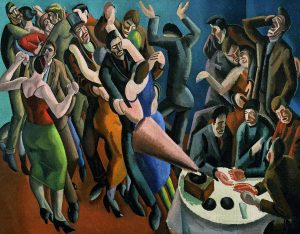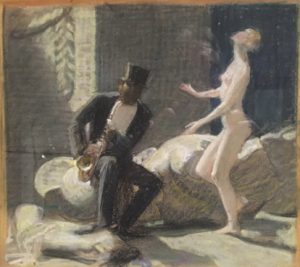Rhythm and Reaction – The Age of Jazz in Britain – Two Temple Place – 27th January to 22nd April 2018
Rhythm and Reaction – The Age of Jazz in Britain – Two Temple Place – 27th January to 22nd April 2018
Rhythm and Reaction an exhibition of the age of jazz in Britain at Two Temple Place, London, WC2R 3BD is curated by Professor Catherine Tackley nee Parsonage, Head of Music at the University of Liverpool and one of the UK’s leading authorities on jazz. I ran out of superlatives to describe this exhibition, but magnificent will do for starters. Details of opening times are at http://www.twotempleplace.org
Rhythm and Reaction is the seventh Winter Exhibition at Two Temple Place and is the product of a partnership between the Bulldog Trust, the Arts Society plus a host of contributors including the National Jazz Archive and Graham Langley.
The venue itself is worth seeing in its own right and is the perfect setting for not only the exploration of the history of jazz in Britain but also the cultural and social context in which jazz flourished. Two Temple place was built by William Waldorf Astoria to house his estate office, his family residence and a place where he could house his extensive collections of art work, musical instruments and books.

The exhibition traces the history of the music before the advent of the “Jazz Age” with late nineteenth century minstrel shows and ragtime. Dance halls; the Hammersmith Palais de dance and the architecture of a BBC dance studio, illustrated with sound recordings and film. Art and design are a strong point of the exhibition with paintings that capture the hedonism, at times of the Jazz Age jazz. Radios from Ekco Plastics Limited in Southend, cartoons and seaside postcards with jazz as its central theme. Raymond McGraths design for the interior of Fischer’s Restaurant; New Bond Street, London in 1932 leads one to the idle thought that it would be great if he were around to design a few jazz clubs today.
Instruments are on display with a fascinating account of the banjo its rise and fall in popularity. Wall paper and china all influenced by jazz are on display with a section on drums from Sticky Wicket’s Classic drum Collection.
Jazz as Black Music is well documented with photographs of the first visits by Duke Ellington, Louis Armstrong, Fats Waller, Cab Calloway to Britain and the growing West Indian community of musicians who with existing black residents formed a successful band under the leadership of Ken ‘Snakehps’ Johnson.

Rhythm and Jazz is superbly researched and beautifully presented, you have until the 22nd April to visit.
Finally there are three books on sale that are well worth buying, the curator of the exhibition Catherine Parsonage’s book The Evolution of Jazz In Britain 1880-1935, published by Ashgate Publishing Limited, Stuart Nicholson’s Jazz A Beginners Guide, published by Oneworld and the late Jim Godbolt’s A History of Jazz in Britain 1919-1950, republished in 2010 by Northway Books.